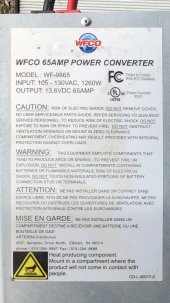This 560 ah 24 v battery pack is a little different than the 50 ah 24 v pack I use. Turns out the absorption and float settings are different. For the 50 ah pack, I use 27.6 absorb and 26.7 float; for the 560 ah Eve pack, I use 27.8 absorb and float.
After a bit of experimentation for the 50 ah pack, I use 27.6 absorb and 26.7 float. This worked perfect where the batteries would charge to 100%, and once charged would float, and any load I had would be replaced in float. Watts used = Watts in.
For this 560 ah Eve pack, I tried those same settings, 27.6 absorb and 26.7 float, but charging seemed to stop before the energy was put back in the battery with my battery monitor showing every day the pack going down by about 5 ah total. Also, when I turned on a load, I would only get about 75% of the power back. If I had a 400 watt load, 300 watts was solar and 100 watts was battery. I adjusted the float to equal absorption, but the same thing. Both the little less charge every day, and after charge float not making up for it left me a less energy than I wanted at sundown.
I Just adjusted my absorption and voltage to 27.8, and seems like its working good. Battery is back to 100%, and if I have a 400 watt load, all 400 watts comes from the battery.



